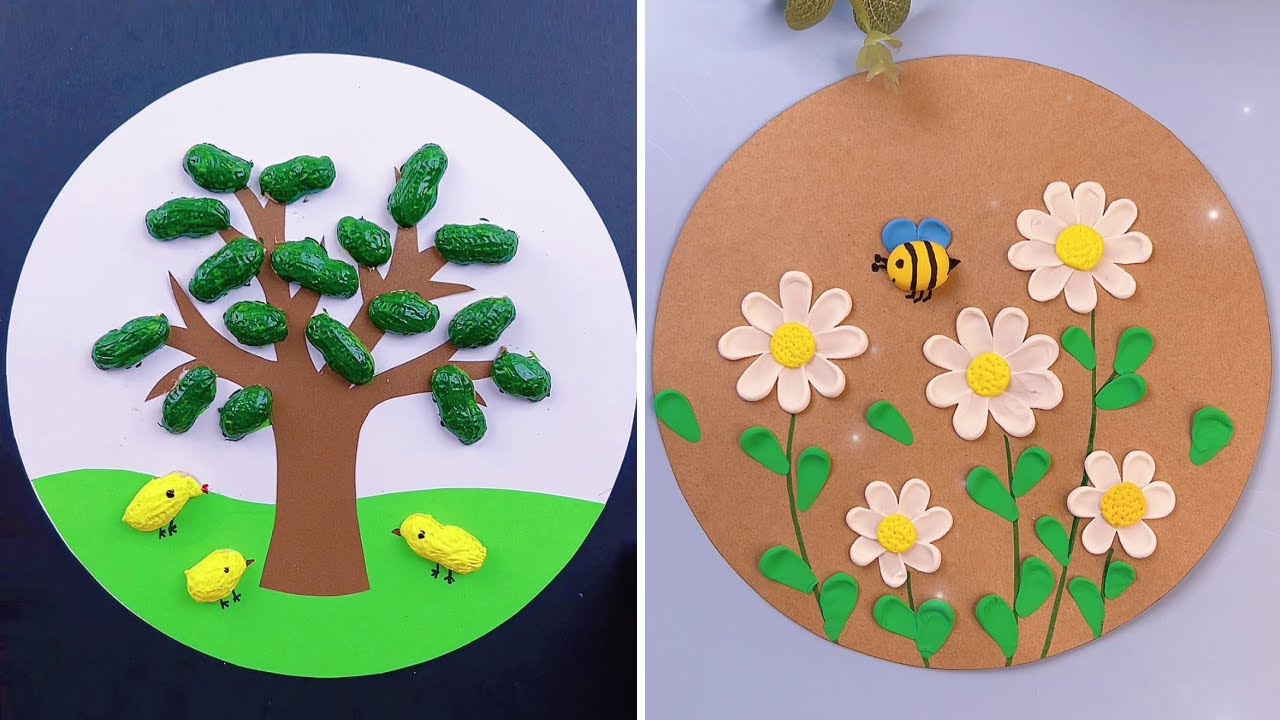Craftsmanship as a form of social entrepreneurship: empowering communities through creativity

The Role of Craftsmanship in Social Entrepreneurship
In many communities, craftsmanship transcends mere skill; it evolves into a fundamental aspect of social entrepreneurship. This intersection of art and purpose not only allows artisans to express their creativity but also creates sustainable economic opportunities that uplift entire communities. Across the United States, an increasing number of initiatives demonstrate how traditional crafting techniques can significantly impact local societies.
For instance, organizations like The Artisan’s Guild foster the revival of time-honored crafts, encouraging local artisans to hone their skills while safeguarding cultural heritage. Through workshops and mentorship programs, artisans can share their knowledge and techniques, ensuring that these crafts are not lost to time. By promoting local economies, these initiatives enable artisans to sell their handmade goods directly to consumers, often through farmers’ markets and craft fairs, thereby keeping money within the community.
- Promote Local Economies: Local craft fairs and artisan cooperatives stimulate economic activity by creating direct sales channels for artisans. In areas like Asheville, North Carolina, and Portland, Oregon, such markets have become vibrant hubs for local culture and commerce.
- Encourage Cultural Exchange: Craftsmanship creates opportunities for diverse communities to share their traditions with one another. For example, organizations like Crafting for Cause bring together artisans from different backgrounds to collaborate on projects, fostering mutual understanding and appreciation.
- Foster Environmental Sustainability: Many artisans today are committed to eco-friendly practices, utilizing sustainable materials and methods. This not only reduces their environmental footprint but also educates consumers about the importance of sustainable choices.
By providing platforms for marginalized groups—particularly women and minorities—these initiatives play a critical role in empowerment and self-sufficiency. The impact extends beyond just financial independence; it gives artisans a voice in their communities, allowing them to advocate for social change and improve their quality of life.
Furthermore, the ripple effect of these enterprises is profound. As artisans gain recognition, their work often inspires others within their communities to pursue their crafts, thereby fostering a culture of creativity and resilience. In this way, craftsmanship serves not only as a means of livelihood but also as a beacon of hope and progress.
As we explore the myriad ways in which craftsmanship can effect change, it is essential to recognize its role in driving economic growth and cultivating a participatory culture. The stories of these artisans remind us that creativity can be a powerful agent for social good, one piece of craftsmanship at a time.
DIVE DEEPER: Click here to discover the therapeutic power of music</p
Unleashing Potential Through Skill and Creativity
At the heart of the social entrepreneurship movement lies a powerful thesis: skillful craftsmanship can transform lives and reshape communities. Through hands-on creation, artisans don’t just bring unique products to market; they generate employment opportunities, safeguard cultural practices, and ignite passion among community members. This transformative capacity enables local players to harness their inherent creativity while addressing pressing social and economic challenges.
One standout example is the flourishing network of artisan cooperatives across the United States. These cooperatives not only provide a platform for artisans to collectively market their products but also encourage collaboration and resource sharing. In regions like New Mexico and Kentucky, artisans are banding together to strengthen their individual crafts while revitalizing local economies. This model allows for shared learning, pooling of creating resources, and even joint decision-making strategies that benefit all members.
Impact on Economic Growth
As these artisan cooperatives flourish, the economic landscape of their communities transforms. Local economies stand to gain from several dimensions, including:
- Job Creation: Artisan businesses often require workforce expansion, thereby creating new jobs for community members. From skilled craftsmen to marketing professionals, these enterprises contribute to a diverse labor market.
- Attracting Tourism: Areas known for unique crafts may attract tourism, drawing visitors interested in authentic local experiences. Events such as craft fairs and artisan markets not only highlight these traditions but also encourage spending within the community.
- Product Diversification: Artisans can innovate upon traditional crafts by integrating contemporary designs, appealing to a broader customer base. This evolution maintains cultural relevance while expanding market reach.
The economic implications of craftsmanship-driven social entrepreneurship extend to fostering resilience among communities, especially in regions hit hard by industrial decline. Here, the revival of traditional crafts serves a dual purpose: providing a meaningful livelihood while reconnecting residents with their cultural roots. This reinvigorated sense of identity plays an instrumental role in community pride and social cohesion, driving collective action for local advancements.
Empowerment Through Creativity
Beyond mere economic benefits, craftsmanship serves as a potent vehicle for social change. Through initiatives focused on empowering individuals—particularly marginalized groups such as women and minorities—artisan projects often lead to increased self-esteem and agency. As artisans learn to master their trade, they not only gain the ability to earn a living but also find themselves becoming advocates for community improvement.
Organizations dedicated to this purpose often provide comprehensive training programs, mentorship, and access to new market opportunities. This holistic approach cultivates a spirit of entrepreneurship, enabling artisans to see their crafts not just as hobbies, but as viable means of supporting themselves and achieving their aspirations. Ultimately, such empowerment resonates within the community as more individuals are inspired to explore their creative potential.
In summary, the dynamic interplay between craftsmanship and social entrepreneurship invites communities to reimagine their futures. Through skill acquisition, economic participation, and cultural preservation, artisans are crafting not just objects, but pathways to a more equitable society.
| Category | Description |
|---|---|
| Community Engagement | Craftsmanship fosters a sense of belonging and collective identity, allowing individuals to connect and collaborate. |
| Economic Empowerment | Through creating unique products, artisans can enhance their financial stability and reduce local poverty rates. |
| Cultural Preservation | Arts and crafts maintain cultural traditions, showcasing a community’s heritage and attracting tourism. |
| Sustainability | Sustainable practices in craftsmanship minimize environmental impact and encourage eco-friendly approaches. |
Craftsmanship as a form of social entrepreneurship delivers a multi-faceted approach to empower communities through creativity. By enabling artisans to express their cultural traditions, communities not only preserve their unique identities but also attract attention in the global market. Community engagement emerges as a vital component, where collaboration among members strengthens social ties and encourages sharing of skills.Moreover, the craft industry significantly contributes to economic empowerment. By offering artisans the opportunity to monetize their talents, communities can see a drop in poverty levels while enhancing overall quality of life. The ripple effect of craftsmanship also leads to the preservation of local cultures, ensuring that next generations can appreciate and learn from their heritage. The movement promotes sustainability, challenging artisans to utilize eco-friendly materials and practices. This not only protects the environment but also attracts environmentally-conscious consumers, ultimately creating a thriving, resilient local economy.
LEARN MORE: Click here to discover the therapeutic power of music
Transformation Through Education and Collaboration
A cornerstone of harnessing craftsmanship as a form of social entrepreneurship lies in its potential for education and community collaboration. In many regions, artisan groups are stepping up to create educational workshops and training programs that invite community members to learn the intricacies of various crafts. This not only preserves vital skills but also ensures that traditional practices continue to thrive amid increasing modernization.
In places like the Appalachian craft community, workshops teach traditional skills such as weaving, woodwork, and ceramics, blending them with business acumen. Participants not only learn how to create but also how to market their products effectively. This dual focus—artistry and entrepreneurship—equips community members with the tools necessary to elevate their status from mere artisans to self-sufficient business owners. The success stories evidenced in these communities showcase the potential of crafting to go beyond mere craftsmanship; it becomes a lifeline for economic and social involvement.
The Role of Technology in Craftsmanship
Moreover, as technology advances, artisans are increasingly utilizing digital platforms and social media as marketing tools, widening their reach far beyond local markets. With websites and social media pages, artisans can showcase their work, connect with potential buyers, and even create global audiences for their unique products. This harnessing of technology not only accelerates business growth but also provides a platform for artisans to share their stories, fostering more profound connections with consumers who value authenticity and support fair trade.
One initiative worth mentioning is the Crafting a Future program, which leverages online marketplaces to help artisans in underprivileged areas sell their creations worldwide. This blend of traditional craftsmanship with modern e-commerce reflects a commitment to sustainable development, empowering individuals while simultaneously expanding their cultural influence across borders.
Social Impact and Community Integration
The ripple effect of artisanal craftsmanship also extends into greater social arenas. Craftwork often acts as a bridge for social integration, where individuals from diverse backgrounds come together to form collaborative groups. These collaborations not only foster inclusivity but also build resilience among community members, as they share resources, skills, and experiences. By creating safe spaces for dialogue and creativity, these artisan networks empower individuals to connect with one another, breaking down barriers and fostering a spirit of unity and cooperation.
Significant evidence exists that crafts can also address important societal issues. For instance, some organizations focus on engaging veterans or previously incarcerated individuals in craftsmanship projects, helping them reintegrate into society. Programs that offer such engagements not only teach the necessary skills for personal development but also imbue a sense of purpose and belonging. Here, craftsmanship moves beyond economic benefits; it becomes a tool for healing, rehabilitation, and bridging the gaps created by social stigmas.
As communities embrace this form of social entrepreneurship, the narrative surrounding craftsmanship shifts from one of mere economic survival to one that champions personal resiliency and shared cultural heritage. As the movement grows, so too does the understanding that creativity is not just an individual pursuit; it is a collective endeavor central to community progress and empowerment.
DISCOVER MORE: Click here for innovative craft techniques
Conclusion: Crafting a New Future Through Community
In summary, craftsmanship as a form of social entrepreneurship not only cultivates skills and nurtures creativity but also serves as a vital catalyst for community empowerment. By fostering educational initiatives and encouraging collaboration among diverse groups, artisan networks are successfully transforming the lives of individuals in often underserved areas. This shared journey of learning paves the way for personal growth and economic independence, allowing artisans to transcend their roles and emerge as self-sufficient business owners.
The integration of technology into traditional craftsmanship offers an unprecedented avenue to reach wider markets, breaking down geographical barriers and connecting artisans with global audiences. Programs like Crafting a Future exemplify how creativity can be harnessed for sustainable development, showcasing the rich cultural narratives behind each handmade creation while driving economic opportunities for marginalized communities.
Moreover, the social impact of craftsmanship transcends economic terms, contributing to greater social integration and restoration. By engaging individuals from diverse backgrounds, these artisan shops become hubs of resilience and creativity, providing meaningful interactions that break down societal barriers.
As the movement continues to gain momentum, it is crucial to recognize the potential of craftsmanship not just as a means of income but as a unifying force that fosters community spirit and cultural heritage. Ultimately, embracing craftsmanship as a vibrant avenue for social entrepreneurship empowers individuals and communities alike, forging a brighter and more inclusive future steeped in creativity.


